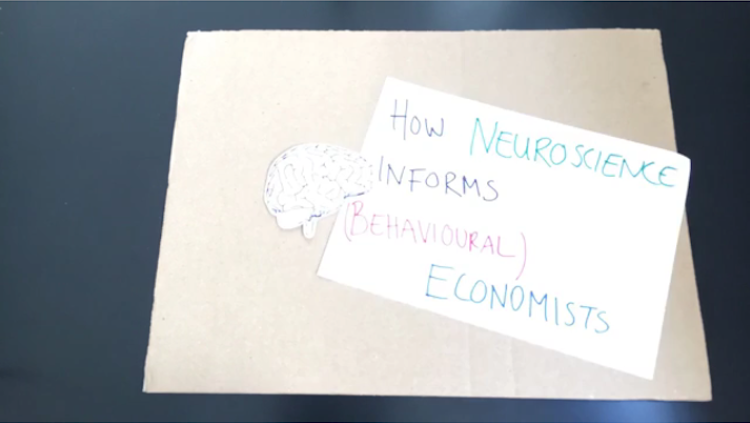Neural Circuits of Fair Play Discovered in the Human Brain
- Published3 Oct 2013
- Author Douglas Fields
- Source BrainFacts/SfN
“Listen to your conscience,” my mother would say. But where does that mysterious urge to do what is right come from? Scientists have now pinpointed the brain circuitry that compels us to behave according to social norms; moreover, researchers can boost a person’s fairness by exciting this brain region, and promote cheating by inhibiting this bit of brain tissue.
Researchers from the University of Zurich and University of Vienna knew from previous fMRI brain imaging research that part of the cerebral cortex in the right hemisphere, called the right lateral prefrontal cortex (rLPFC), activates when a person weights the fairness versus selfishness of a behavior, but this effect is only a correlation.
To test whether the rLPFC actually controls a person’s behavior according to social norms, requires manipulating electrical activity in this brain region to see whether or not the person’s selfish behavior changes. Electrical activity in specific regions of the cerebral cortex can be altered harmlessly by delivering a mild electrical pulse through electrodes placed on the scalp over the region of brain being targeted. A positively charged electrode will excite the brain region and a negatively charged electrode will inhibit it.
Participants in the study played a social game via computer network. A player was given money and asked to share it with another anonymous player on-line. For example, if the player received $50, she could share it equally with the other player as expected by social rules of fairness, or she could act selfishly and keep most of it. In this situation, players on average shared only 10-25% of the funds. However, if the player knew that she could be punished for not sharing equally, her behavior changed, and on average she voluntarily contributed 40-50% of her income with player B.
This confirms that our compliance with social norms (sharing equally) depends on whether or not our actions are subject to social sanction (punishment) for unfairness. It’s the “hand caught in the cookie jar effect,” where cookies tend to disappear faster when no one is looking.
When researchers applied a positive charge to the electrode to increase activity in the rLPFC, players shared 33.5% more money with their randomly assigned partner. When electrical activity in the rLPFC was inhibited by a negative charge on the electrode, the players shared 22.7% less money. Thus fair play in situations where there is the possibility of punishment can be increased or decreased by regulating the level of activity in this brain region.
Interestingly, the opposite pattern was found in trials involving non-punishable sharing. The researchers conclude that even though stimulating the rLPFC does not make the person more generous in general, it does make a person more compliant in following social rules in situations where there is the possibility of punishment. This is significant, because the rules of society are maintained by threat of punishment, be it peer criticism or legal action. This neural circuitry is what binds human beings into complex social structures.
“Our findings suggest a neural mechanism that is specialized for social norm compliance,” says Christian Ruff, one of the researchers in the study, in an e-mail. This finding has important implications because people with damage to this brain region can have problems in controlling behavior in general and in some cases problems specifically during social interactions. “Targeted influences on these neural processes (by brain stimulation or pharmacology) may help to ameliorate problems with social norm compliance in medical and forensic contexts,” he says.
Interestingly the rLPFC is the last brain region to mature and it is not fully developed in teenagers. “This may be one of the reasons why teenagers have problems with control of their behavior, even though they are as aware as grow-ups about the risks associated with particular behaviors,” Ruff notes.
The study involved only college-aged women because the scientists were concerned that including males could increase the variation in their data, but they do not believe the findings only relate to women. “Both men and women increase their norm compliance when threatened with punishment. Moreover, their rLPFC is similarly structured (despite differences in overall brain size),” he says.
Although stimulating the rLPFC modifies compliance with social norms, the neural circuits controlling “good behavior” are not necessarily confined to this one spot in the brain. “In fact, based on what we know about PFC function,” says Ruff, “it is very plausible that the rLPFC is integrating and controlling the activity in a whole network of areas in order to bring about norm-compliant behavior.”
Evolution of neural circuits in the human brain that are specialized for behaving according to society’s rules are crucial because human beings are utterly dependent on a complex social structure for their survival. “Social punishments have been a central mechanism shaping the development of human social behavior, and this new finding helps us understand why all known human societies have to enforce norms with (very costly) legal institutions that issue punishment threats,” Ruff explains. The results are published in the October 4, 2013 edition of the journal Science.
CONTENT PROVIDED BY
BrainFacts/SfN
References
Ruff, Ugazio and Fehr (2013) Changing social norm compliance with noninvasive brain stimulation. Science 10.1126/science.1241399


















